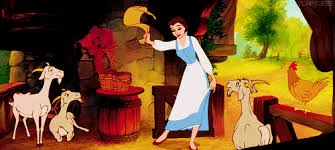by Rhonda white
Reprinted with permission from:
SHARING HOMEMADE BREAD
Today is bread day.
A few weeks ago, I succumbed to an urge that had been rising within me for a few months, and that was to make bread. Not just any bread, not bread from a boxed mix, and nothing that could be whipped up in a few minutes’ time, dumped into a bread machine, and popped out in a squarish loaf resembling an Amazon.com cardboard package. I wanted to make homemade sourdough bread; the kind that takes at least a week to prepare, the kind that must be fed and nurtured and allowed to rest, the kind created from—and by—living, breathing beings.
I should tell you that I killed my first starter.
There are certain, unbreakable, scientific laws that come with making homemade sourdough bread, and as ominous as that sounds, they’re actually quite simple to follow. That is, as long as you remember one of the most important rules, that being that you must stir your starter with a wooden spoon. Any contact with metal spoons (nickel, silver, aluminum, etc.) can introduce molecules that will kill the living microorganisms of yeasty sourdough starter. When feeding my sourdough starter the first time, you guessed it; I grabbed a metal spoon. Two days later, instead of the sweetly sour fragrance given off by healthy sourdough starter, mine reeked of rotting garbage, and the bubbles that occasionally rose to the surface had ceased. My starter had stopped breathing and died.
I’ve taken more care since then, and today as I stirred sugar, salt, oil, and flour into my starter and began kneading the dough, I thought of stories and of writing. Why is it that one creative act feeds another? I may never know the answer, but I’m always grateful for the inspirational nourishment. As I worked the dough, I recalled scripture from the King James Version of the Holy Bible: “And Jesus said unto them, I am the bread of life: he that cometh to me shall never hunger; and he that believeth on me shall never thirst” (John 6:35).
I then thought of even older writings, one from the ancient Anglo-Saxon story of Beowulf, in which the bakers charge a share of grain to make and bake bread in communal ovens for the entire community. I was further inspired to look up a couple of quotes that I remembered from other poems and stories, wondering why these snippets have stuck with me for so long, choosing today to bubble to the surface:
“A Book of Verses underneath the Bough
A Jug of Wine, a Loaf of Bread–and Thou
Beside me singing in the Wilderness—
Oh, Wilderness were Paradise enow!” –The Rubaiyat of Omar Khayyam, 5th Ed.
A Jug of Wine, a Loaf of Bread–and Thou
Beside me singing in the Wilderness—
Oh, Wilderness were Paradise enow!” –The Rubaiyat of Omar Khayyam, 5th Ed.
And from more recent works:
“They swallowed the dark bread. It was like daylight under the fluorescent trays of light. They talked on into the early morning, the high, pale cast of light in the windows, and they did not think of leaving.” –Raymond Carver, from “A Small, Good Thing”
“The heat of the bread burned into my skin, but I clutched it tighter, clinging to life.” –Suzanne Collins, from The Hunger Games
You probably recall many other examples of bread used symbolically in literature. Why is it that writers often mention bread in their stories—aside from the obvious, that their characters must eat? Bread does more than simply feed the hungry protagonist; it serves as metaphor for deeper issues and hidden secrets in a story. Bread is sometimes used to represent life and health, or the lack thereof (as in stale bread, or moldy bread); it is used to represent plenty, as in the Biblical story of the loaves and fishes; it’s sometimes symbolic of comfort, family, and unity, as in To Kill a Mockingbird; and, in Hansel and Gretel, breadcrumbs are used to mark the way back home. It’s this last metaphor that I chose to use in my current work in progress, tentatively titled Romie & Jasper’s Big Empty:
“I stand on the back deck of the house, overlooking the acres and acres of grapevines, and I feel small, as if I’ve shrunk. I wonder if it’s true, if I have become smaller each time I’ve moved, if I left behind a broken-off piece of myself, like a trail of breadcrumbs, so I can someday find my way back to whatever place might be home.”
As I kneaded my bread this morning, it occurred to me how much making homemade sourdough bread is akin to writing. We put in the basic ingredients—our nouns and verbs and punctuation—and we let them rest. Days later, we return to the mixture, feed it with fresh words, stir them around, and let them breathe. After more respite, we keep a carefully measured portion, toss out what isn’t needed, and we add something sweet, something salty, and we work out the lumps and bubbles, ensuring that when we are done, it will rise and nourish all who taste it.
My sourdough recipe makes three loaves: one for today, one for later in the week, and one to share with friends. Sharing homemade bread—and memories and stories—with friends is my favorite part of the artistic process: it is the giving of one’s creativity, of one’s effort, of oneself, however noble or humble that gift may be.
“And he took bread, and gave thanks, and brake it, and gave unto them, saying, This is my body which is given for you: this do in remembrance of me.” Luke 22:19 (KJV)
© 2015. Rhonda Browning White. All Rights Reserved.
This has been reposted with permission from Rhonda’s blog,





